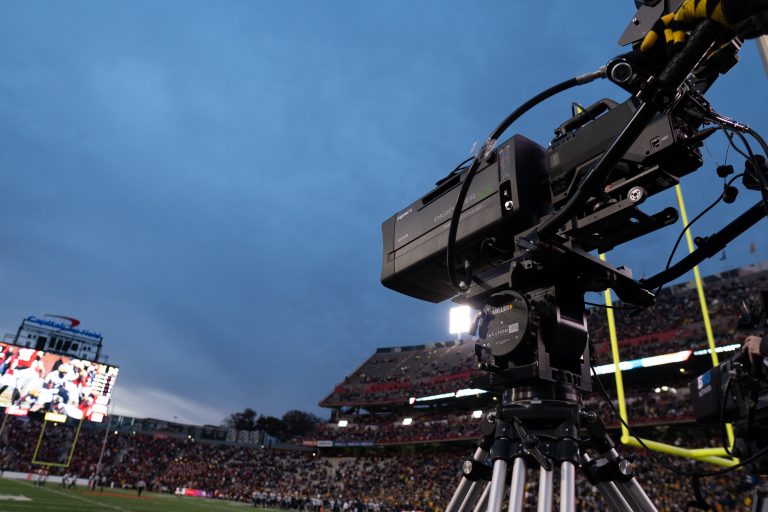University of Maryland Athletics Selects Sony Broadcast, PTZ Cameras For Tech Refresh
The HDC-3500 and BRC-X1000 are part of a plan to engage viewers more fully with athletics

COLLEGE PARK, Md.—The University of Maryland Athletics Department recently completed a technology refresh across school venues to elevate viewer engagement at home and in person, including a camera upgrade that saw the university standardizing on eight Sony high-frame-rate (HFR) capable HDC-3500 system cameras and two BRC-X1000 pan-tilt-zoom (PTZ) cameras.
Josh Clayton, assistant athletics director of TerpVision [the terrapin is the state reptile and official mascot of the university] and Video Operation, was instrumental in selecting the cameras for the upgrade as he sought a way to address growing content demand. The University of Maryland conducted a blind shootout pitting Sony’s cameras against the competition.
“After reviewing the cameras, it was clear there was one option that was head and shoulders above the rest, and that was the Sony HDC-3500,” said Clayton.
The university, which already owned several Sony cameras and continues to use some of them, was also comfortable with the company’s cameras, their layout and the experience the university has had with Sony’s support team—all factors that made selecting the new models easy, he said.
“Another important element was the image matching and ecosystem compatibility between our older triax cameras and these new HDC-3500s. The first time we fired up the cameras without really painting, everything looked amazing. And that’s just what we wanted – to have everything work right out of the box and not have to worry about the details,” said Clayton.
The university embarked on the refresh in part to up its video game, which includes feeding cameras to Big 10 Networks, streaming and outside TV broadcast production as well as meeting the display requirements of video boards installed around the campus at various sports venues.
“Our video board is 120-feet-wide-by-54-feet-tall, and has a pixel count of 3600 x 1620, so we’re upconverting our 1080 images and the final product looks amazing with these HDC-3500 cameras. They offer a really nice, clear picture in camera,” said Clayton.
The professional video industry's #1 source for news, trends and product and tech information. Sign up below.
“It’s getting difficult to share our feeds with our trucks because they can’t compete with the images from the HDC-3500.”
The university is taking advantage of the cameras’ support for high dynamic range, and selected hybrid log gamma (HLG) as its HDR approach because it offers the flexibility to support its large video boards, in-house feeds piped around sports venue concourses and non-HDR displays as well. “The flexibility of the HLG standard in HDR provides us with a crisp and incredible image on our enormous HDR football board and even looks great on our non-HDR center-hung at the XFINITY Center,” he said.
The HDC-3500 camera acquisition also includes two licenses for HFR capture, enabling 4x super so mo, which is used frequently for gymnastics, volleyball, baseball and football. “We’ve brought in a second camera operator on game days that is solely focused on the slo mo camera. And it’s not just the technical teams who have noticed the difference HFR offers – fans do, too,” he said.
The Sony BRC-X1000 PTZ cameras were a good fit for the university because they offer the resolution and color-matching needed to integrate easily into footage shot by the school’s other cameras, said Clayton.
The PTZ cameras also made it possible for Clayton to achieve a long-held production goal: capturing shots above center court for basketball.
“When the players are walking to the court for tip-off, the camera operator swings the camera down and starts to push in on the referee’s hand as he gets ready to throw the ball in the air. It’s amazing to see these new vantage points,” he said.
More information is available on the company’s website.
.
Phil Kurz is a contributing editor to TV Tech. He has written about TV and video technology for more than 30 years and served as editor of three leading industry magazines. He earned a Bachelor of Journalism and a Master’s Degree in Journalism from the University of Missouri-Columbia School of Journalism.

